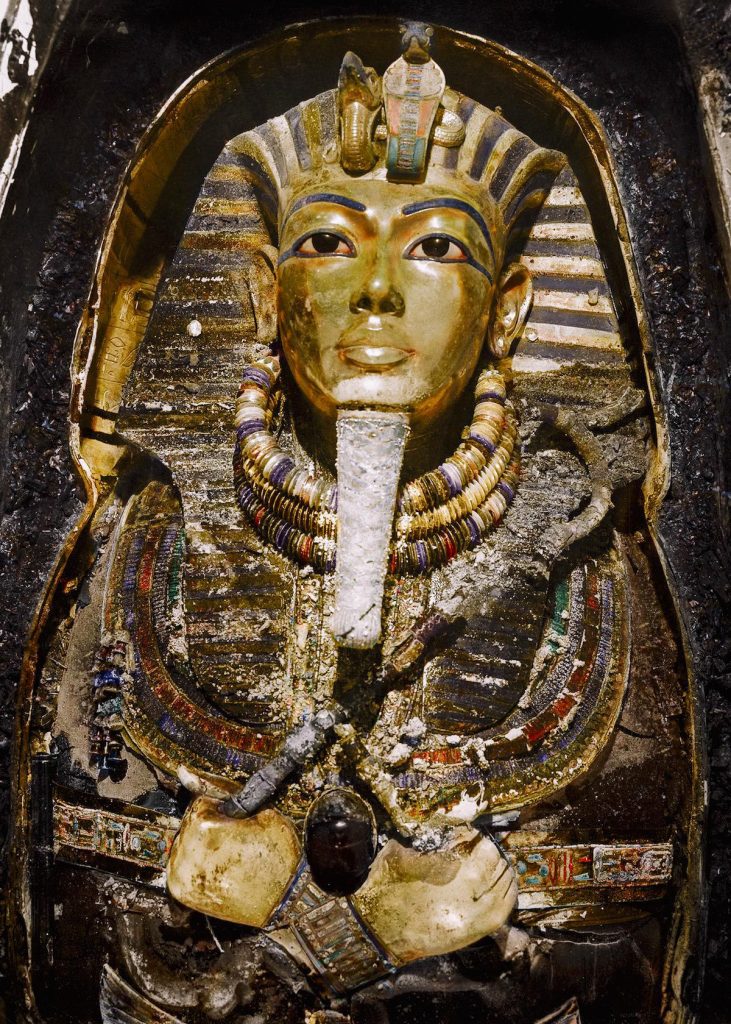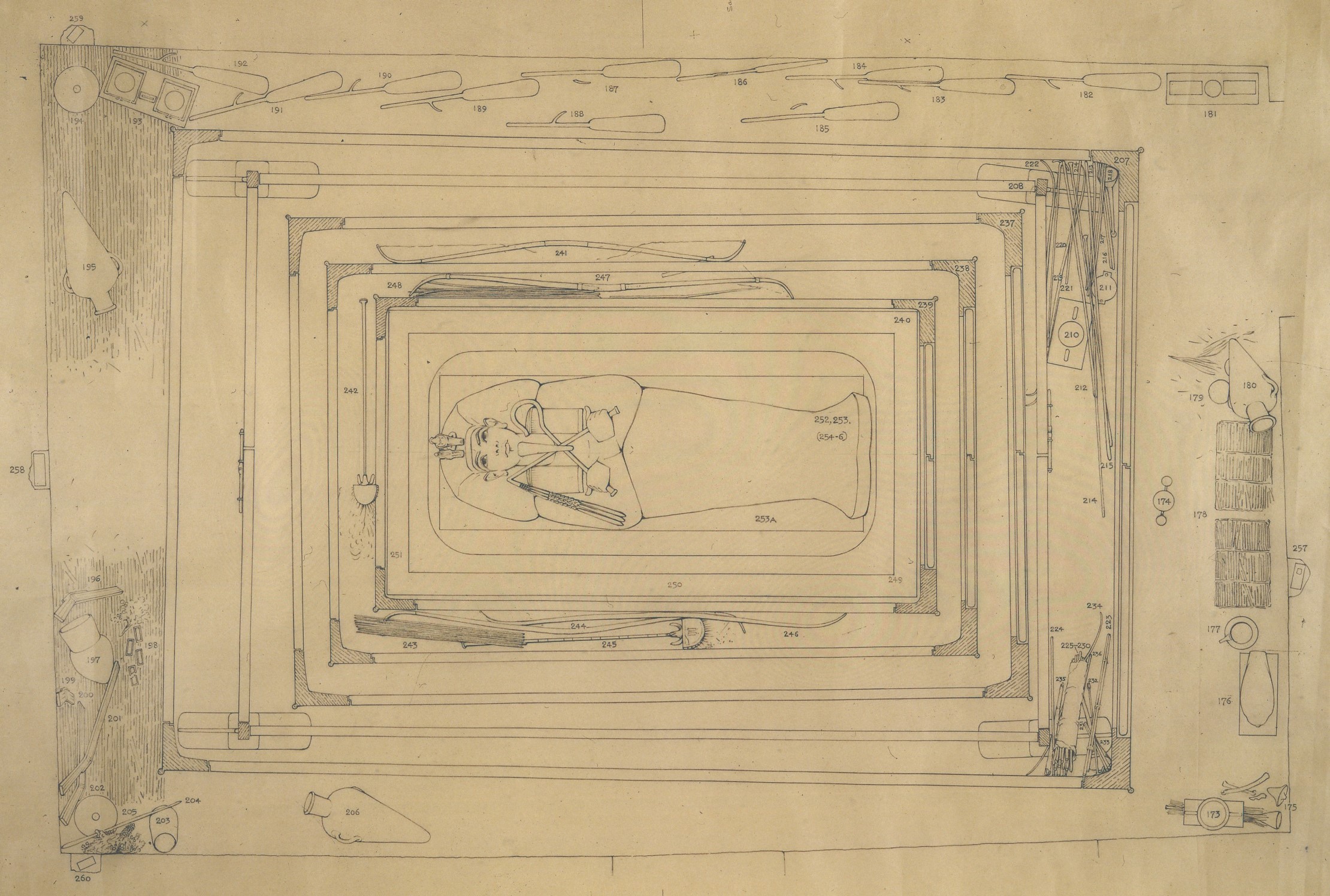How an Early Childhood Museum Experience Made a Life Impact
Today, I want to take a moment to pay homage to the experience that inspired me to pursue art education and share my adventures at the MET Museum. It all began with a visit to the Egyptian Museum in Cairo, where I was just a 6 or 7-year-old living in Egypt in the early 90s.
The Egyptian Museum had a profound impact on me, as it opened my eyes to the power of exploring a culture through art. I was amazed and fascinated by the artifacts I encountered, particularly the busts with elongated skulls, like the head of princess, daughter of Akhenaten.

The museum's most famous piece, the golden mask of Tutankhamun, made me ponder the incredible effort and care that went into creating such a magnificent work of art. It stood the test of time (despite recent repairs), symbolizing a way to honor the duties of human life and prepare for the next journey, which includes judgement, rebirth.

It's crucial to consider the context when exploring art. I vividly remember looking at colorized images of King Tut's tomb during its discovery in 1922. The photographs taken by Harry Burton transported me back in time, making the discovery even more striking.

The experience of viewing these ancient artworks in person was extraordinary. I realized that art, often hidden away in tombs and initially reserved for a select few (initially gods), now had the potential to inspire and ignite curiosity in everyone. Access to art has become democratized, and it allows us to reflect on our fortunate position in history.
Although the Egyptian kings and queens belonged to another world, I felt a connection to them through their art, even as a child.
Under the Influence of Lapis, Gold, and Stone
The memories of the exquisite necklaces and monumental stone monuments still resonate with me. One color, in particular, stood out: blue. It became my favorite color, and I later discovered that this love for blue and necklaces originated from my early exposure to Egyptian art.
Even Marco Polo talked about the special blue pigment from Afghanistan:
“There is a mountain in that region where the finest azure [lapis lazuli] in the world is found. It appears in veins like silver streaks.”
Marco Polo
The Rich History of Egyptian Blue: Cuprorivaite, a Prized Pigment
Egyptian Blue, also known as cuprorivaite, is a natural ultramarine pigment obtained from lapis lazuli. Since the late 13th century, it has been highly valued by European painters and was often reserved for painting the mantel of the Virgin Mary, imbuing the artwork with a divine nature.

In Ancient Egypt, the color blue (irtyu) held great significance as it represented the heavens and symbolized the universe. It was also associated with water and the Nile, making it a color of life, fertility, and rebirth. According to a myth, the hair of the gods was said to be made of precious Lapis Lazuli (khesbedj). Interestingly, there is a parallel in the East, where Buddha statues are depicted with blue hair, as seen in Tibet. This association likely stems from the Sanskrit word "nila," which means black, blue, or dark.
The Egyptians had access to lapis lazuli, a semi-precious stone from Afghanistan, but its importation made it a luxury item. Therefore, there was a need to invent another blue pigment. Egyptian blue, with copper as its main component, is considered to be the first synthetic pigment. The Romans knew it by the name caeruleum, which translates to sky-blue in Latin.
Egyptian Turquoise: A Stone of Mystique and Metaphysical Power
Egyptian Turquoise has a history dating back over 7,500 years in Egypt. It held immense value for the Egyptians, who considered it a secret stone imbued with metaphysical powers.
A Palette of Colors: Red Ochre, Yellow Orpiment, Green Frit, and Egyptian Blue
The Egyptians employed a diverse range of pigments in their artistic creations. These included red ochre, yellow orpiment, green frit, carbon black, and the renowned "Egyptian blue." This synthetic pigment was skillfully applied in various shades, adding depth and vibrancy to their artwork.

Captivated by Egyptian Royalty: Awe-Inspiring Sculptures and Jewelry
Imagine the profound impact of encountering sculptures and jewelry that once belonged to the kings and queens of ancient Egypt, particularly as a child. One such example is the renowned bust of Nefertiti, which is currently housed in Berlin, Germany.
Concluding Reflections: The Power of Art to Connect and Inspire
Art offers us a gateway to connect with and understand different cultures, enabling us to tap into our inherent creativity. It reflects what we choose to pay attention to—whether it is the profound or the superficial, the connectedness of a larger whole or the isolation of disconnected fragments.
Interacting with art and experiencing it firsthand brings about authentic and active learning. It encourages us to reflect, find inspiration, and cultivate innovative thoughts. This is precisely why I write—to explore the profound impact of art. In a society that has long prioritized practicality, the importance of art becomes even more significant. As the digital creator's economy rises, the scarcity of physical "in person" experiences makes them all the more valuable and enriching.



Above are a few pictures that capture cherished memories: one with Yuko, a friend of my parents, in front of the Cairo Museum; another featuring me in a state of awe and wonder inside the Great Pyramid; and a third one showcasing the captivating backdrop of the Nile River, with me and my stepdad.
More reading:
- Mongol Empire: Cultivating Artistic Renaissance Across Realms
- Rosa Bonheur: Artistic Autonomy Through Realistic Painting
- Unveiling Masterpieces: NYC’s Exuberant Realism!
- Unlocking the Enigma of a Viking Sword: The Legacy of Hartolfr
- How an Early Childhood Museum Experience Shaped My Life: Exploring the Egyptian Museum of Cairo
Resources related to this article:
The Griffith Institute, University of Oxford - Learning Resources
Colorized Photos Reveal the Historic Moment King Tut’s Tomb Was Discovered
Tutankhamun's Mask Reconsidered (Nicholas Reeves, 2015)
19 Must-See Things at Egyptian Museum, Cairo (+Practical Tips)
Egyptian Blue – The Oldest Known Artificial Pigment
Characteristics of Common Blue Pigments (2007 Museum of Fine Arts, Boston)
Brief Egyptian Turquoise History
Ancient Egyptian Blue Pigment Boosts Energy Efficiency
Meaning of Blue in Ancient Egypt. (Hill, J., 2010)

No Comments.